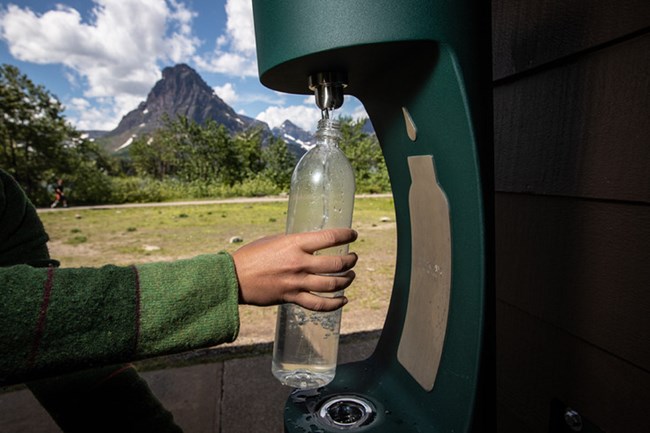Conserve Water Where You Live
Water isn't restricted to flowing within park boundaries — watersheds can span a few square miles up to several thousand! Water flows in and out of park boundaries, into neighboring lands and gateway communities. Every living thing on this planet needs water to survive — even you! Please do your part to conserve water quality and quantity where you live.

NPS Photo
Here are some ways to help preserve water quantity:
- Don't let it run. Turn off the tap while brushing your teeth or shaving, or between dishes when washing them.
- Water wisely and less frequently. Choose native plants and grasses that require less supplemental water. If necessary, water your lawn and/or plants early in the morning. Watering in the heat of the day can cause more water to evaporate. Always obey local watering restrictions.
- Wash efficiently. Take shorter showers and only run full loads in the dishwasher or closhes washer.
- Install low-flow fixtures. Low-flow shower heads, faucets, and toilets can dramatically lower your water usage.
- Capture and reuse rainwater. Use a rain barrel to catch rainwater from your gutters.
- Reduce landscape irrigation. Or, better yet, replace the non-native grasses and shurbs with native, drought-tolerant species such as buffalo grass. They don't require watering!
Here are some ways to help preserve water quality:
- Dispose of waste properly. Contaminants found in motor oil, paint, plastics, batteries, unused chemicals, and medications can make their way into our waterways if not disposed of properly. Some municipalities provide an organic waste (food and yard waste) pick up. Check in with your local municipality or waste management company to find out how to properly dispose of these potentially hazardous items.
- Reduce fertilizer use. Fertilizer contributes to excess nitrogen and phosphorous in water bodies, which can lead to things like algal blooms. Reducing fertilizer use can reduce the potential for algal blooms.
- Pick up after your pet. Feces contain unhealthy bacteria. Picking up pet waste, especially near water sources, will help remove potential pathogens.
- Use natural cleaners. Many household cleaners contain potentially harmful chemicals. Use natural, non-toxic cleaners as much as possible.
Connected Conservation
Conservation at HomeLast updated: June 6, 2023
